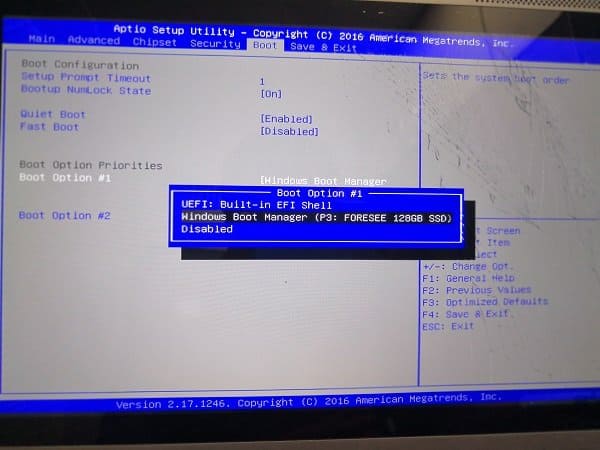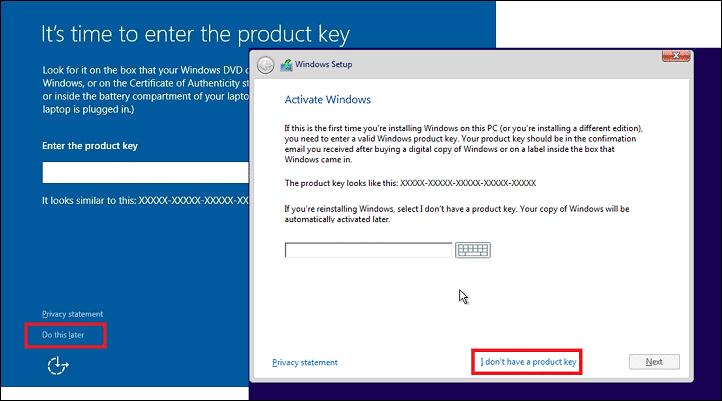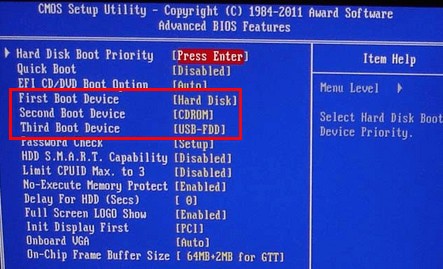- First, Shut Down your system, remove the old Hard Drive, and Replace it with the new SSD. Please note that at the time of the installation, only SSD is attached.
- Next, insert the bootable USB or Disk that was created using the Media Creation Tool.
- Next, head into your BIOS, and select the first option, which is the SATA Mode Selection. Here, set the mode to AHCI.

- The next step is to change the boot order. This determines the order in which the drives are booted when you start the computer. Make sure that the bootable media that you have created is on top of the list.

- Once you have done the above, Save changes to the BIOS and Reboot your Windows 10 PC/Laptop.
- Since you set the bootable media as the first device to be booted up, the installation of the Windows 10 OS will now begin.
- When the installation is underway, there will come a stage where you will be asked for a product key. What you want to do here is to skip this step, and choose the option that says ‘I am Reinstalling Windows 10 on this PC’. If you had a legal copy of Windows 10, the activation will be automatic thanks to the digital entitlement stored on the Microsoft Servers.

- Your Device might reboot at this point, and what you have to do is you have to enter your BIOS again, and this time changes the boot order such that your system boots the Hard Disk. If you do not change the boot order, your Computer will keep reinstalling the Windows 10 OS since the bootable media will keep starting up on boot.

- Once the installation is complete and the system boot successfully with the freshly installed Windows 10, Shut down your system.
- If you have a second HDD bay install the old HDD into it and start your system. If your Windows 10 PC has an extra Hard disk bay, install the old hard drive in that, and then start up your computer.
- Refresh your File Manager or reboot your system a couple of times, until you see both drives visible in the File Manager window.
- Install any required drivers (can be obtained from the support page on the Website of the manufacturer of your system. Now, check whether all the drivers are available, and if there are any updates pending, perform them by either downloading the latest drivers from the manufacturer website or by using the driver troubleshooter on Windows 10.
- Finally, with your system up and running, copy all the files and folders from the old hard drive, and copy it on a temporary folder on the new SSD.
Next, format the old Hard Drive. You can even rename it if you want.
Copy all the files back into the formatted Hard Drive, and delete the content on the SSD.

